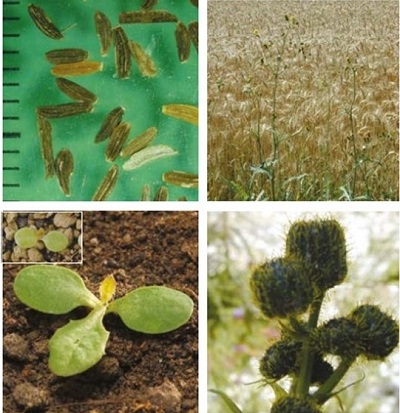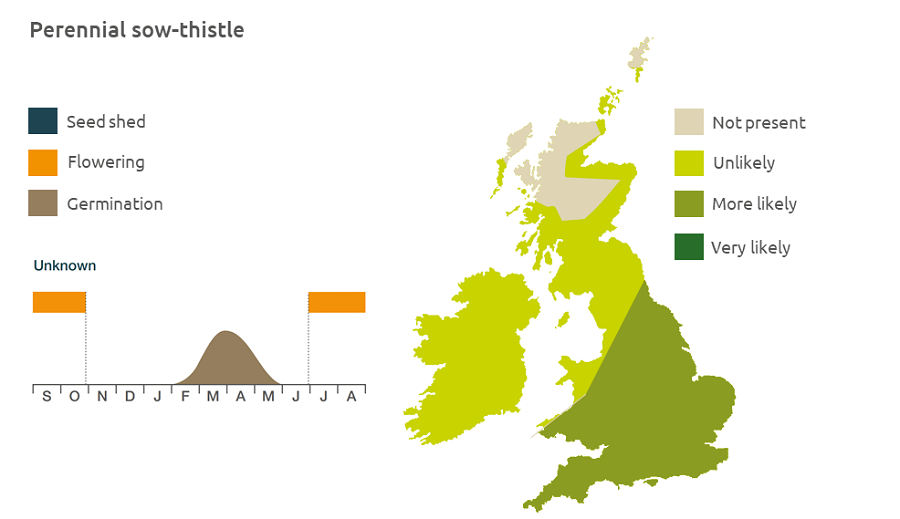- Home
- Knowledge library
- Distribution and biology of perennial sow-thistle in the UK
Distribution and biology of perennial sow-thistle in the UK
Perennial sow-thistle is a broad-leaved weed that can be particularly competitive in winter oilseed rape. Find out how to identify and control it.
Overview
Perennial sow-thistle (Sonchus arvensis) is a weed of field margins but may occur in patches in arable fields; it is most often a nuisance in perennial crops. The flowers are fertilised by insects and can be cross- or self-fertile. Seeds are dispersed by wind and germinate in spring, requiring chilling.
- It is particularly competitive in winter oilseed rape
- It has value to biodiversity
Description
It is a tall prickly perennial which can form large clumps, spreading the rhizome. The leaves are shiny, lobed and green, with a narrow finger-shaped lobe at the tip. Flowers are yellow, similar to dandelion flowers, and arranged in umbrella-like groups.
Key features
Flower: Typically, the branches of the flowering shoot and the flowerheads bear tiny yellow glandular hairs.

Location and life cycle

Geographic distribution
Mainly confined to England and the coastal areas of Wales, Scotland and Ireland, perennial sow-thistle is usually found on roadsides and verges and arable field edges.
Soil type
It prefers damp to wet, heavy deep loams and clays, high in nitrates and humus.
Seed statistics
- Seed longevity: >5 years
- Germination depth: 5 cm
- Seed weight: 0.25 mg
- Seeds/head: 160
- Seeds/plant: 5,000
Management
It is readily controlled in open ground, but can be awkward to control selectively in crops other than cereals and brassicas. As perennial sow-thistle can also spread from fragments of rhizomes, autumn cultivation to weaken rhizomes may assist in control.
For advice on herbicides, please speak with your agronomist or adviser.
When was this information last updated?
This page is based on content from the encyclopaedia of arable weeds publication. Since it was first released in 2008, the publication has been redesigned several times but not revised. However, it remains a good foundation for general information on the distribution and biology of weeds.

